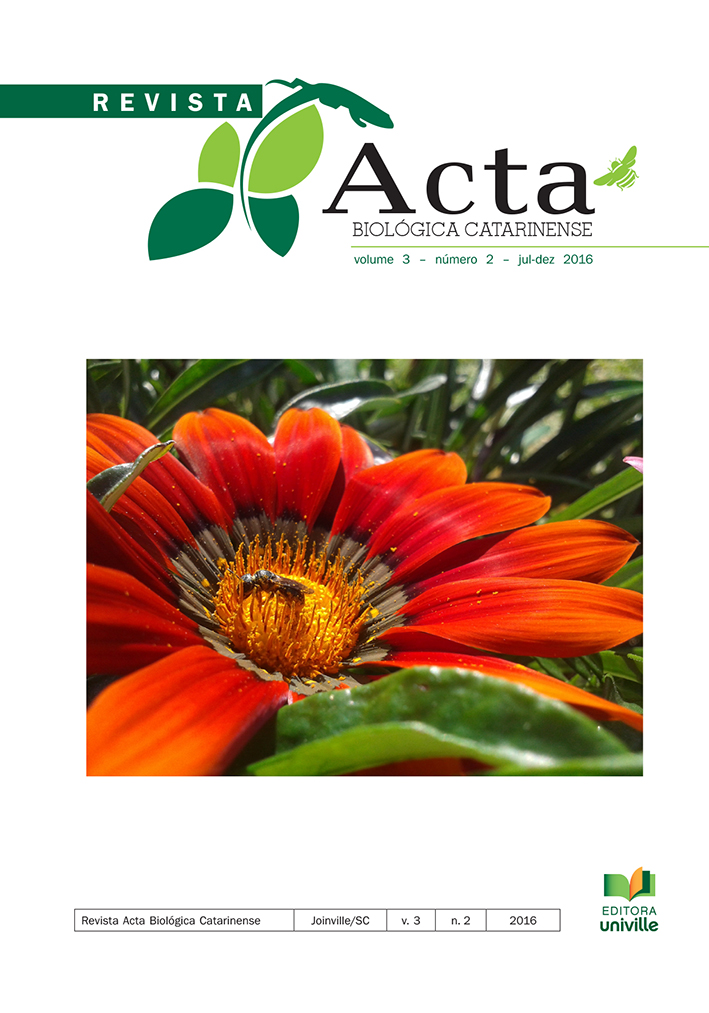Richness of insect galls on shrub-tree restinga of a coastal plain of southern Brazil
DOI:
https://doi.org/10.21726/abc.v3i2.478Palavras-chave:
Cecidomyiidae; coastal vegetation; plant-insect interaction; super-hosts.Resumo
The restingas are coastal ecosystems over the sandy Quaternary plains. Their vegetation present flora and structure conditioned mainly by edaphic factors. They vary from grasslands, shrub lands up to woody forests. Their environmental conditions, such as water stress and high solar irradiance, may be associated to a high richness of galling. This study aims to identify the insect-plant interactions of the gall type, in a shrub-tree restinga formation at the Acaraí State Park, situated in São Francisco do Sul, Santa Catarina State. The survey was conducted in four plots of 250 x 5 m (5,000 m²) of the PELD/PPBio module, with a sample effort of 32 hours. There were found 56 morphospecies of galls in 31 species of host plants. Lauraceae, Myrtaceae, Melastomataceae, Nyctaginaceae and Calophyllaceae showed the highest number of interactions. Guapira opposita (Nyctaginaceae) and Calophyllum brasiliense (Calophyllaceae) were the major super-hosts. There was a predominance of isolated globoid galls on leaves, induced by Diptera – Cecidomyiidae. Galls on stems were less abundant. The focus of this inventory was restricted to the aerial parts of the plants, which limited the galls records on roots, for which there were records only in adventitious roots of the epiphyte Philodendron surinamense. The richness of galls seems to be proportional to the richness of plant species in this restinga formation.


